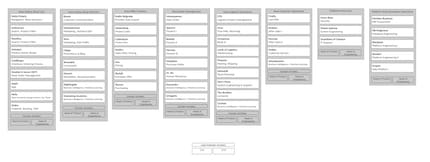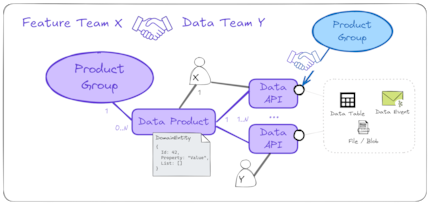
Behind the scenes
next-yak: Innovation made in Zurich (part 2)
by Christian Margadant

Three years on from our last blog post, we’ve come a long way. New teams, innovative technologies and attractive incentives characterise our company. However, our main drive remains unchanged: we strive for bold ideas and outstanding products. Our organisation and data architecture have also consistently adapted to growing demands.
Our organisation developed further where it made sense and where we saw new opportunities. We now work on two new areas and have several new teams, say for platform topics, search, data analysis and security.
We don’t just think about the present, but the future as well. The first software development apprentices have successfully completed their training with us, and we’ll continue to train and support new talent in the coming years.
As part of our modular software architecture, we’re currently working on our data architecture and have developed a vision and strategy for this. Our vision:
Our data architecture is designed to enable efficient and effective data-informed decisions throughout our organisation. Whether it’s employees accessing reports and performing ad hoc analyses, or systems leveraging machine learning for process automation, we aim to provide reliable, securely accessible, and high-quality data.
We provide data from a product group as well-modelled data products, which consist of various technical data APIs (such as Kafka Streams or Big Query Tables). This maintains the professionalism and technical interoperability of our data solutions.
With the Shift Left approach, we want to overcome the separation between analytical and operational data. The aim here is to create high-quality – i.e. consistent, valid and complete – data APIs as close to the source as possible. This way, we avoid redundant business logic and simplify downstream processes, making them more robust.
In practice, this means that data is provided directly from the operational source as data API (Data Event Kafka Stream) or recorded internally as consistently modelled entities instead of raw relational tables that have to be reconstructed with plenty of work. If you want a more detailed explanation of Shift Left, you can find out more here.
With our data architecture, we create the foundation for innovation and data-driven excellence – precise, scalable and perfectly designed to optimise your shopping experience!
At Digitec Galaxus, we tackle tasks proactively and conquer new markets with over 3,200 employees in Switzerland, Germany and Serbia. Variety is our key to success, and you can be part of this exciting journey!
Education and growth:
Interested? Take a look at our job offers and join one of our innovative teams.
I am passionate about optimizing our after-sales processes, taking the customer experience to a new level and working on innovative last-mile solutions to meet the needs of our customers in the long term. In my free time, I recharge my batteries with kitesurfing, gravel biking and all kinds of snow sports.
News about features in our shop, information from marketing and logistics, and much more.
Show allIn May 2022, we took an honest look behind the scenes in our blog post titled Product Development – an eclectic bunch who dislike bureaucracy and learn from mistakes. Three years on, a lot has changed. At the same time, what makes us special is still palpable: that desire for bold ideas, a trust in personal responsibility and the will to build something great together.

Technically, a lot has happened: we’ve systematically developed our data architecture and introduced new technologies, both at the front and back end. You can see which technologies we’re currently working on in the publicly accessible Tech Radar. After all, we don’t just do this for our own benefit! We still strive to create better products and better customer experiences, and to do this we need a development environment that inspires us.
We use the opportunity to process ever larger and distributed data volumes efficiently, with a focus on consistency and topicality. In doing so, we rely on the event streaming platform Apache Kafka to reliably propagate state changes through our systems in real time. Supplemented by BigQuery and Jupyter Notebooks, we enable fast, reliable analytical queries. This is how we create a structured, dynamic data world that optimally supports us in our data-driven decisions.

Our data architecture follows product groups defined for the overall system, which act as the logical boundaries of our modular system architecture. In these product groups – based on the bounded context from domain-driven design (DDD) – data and software specialists cooperate closely to develop high-quality data solutions according to Data Mesh principles.
Flexibility that suits you:
Exclusive goodies: